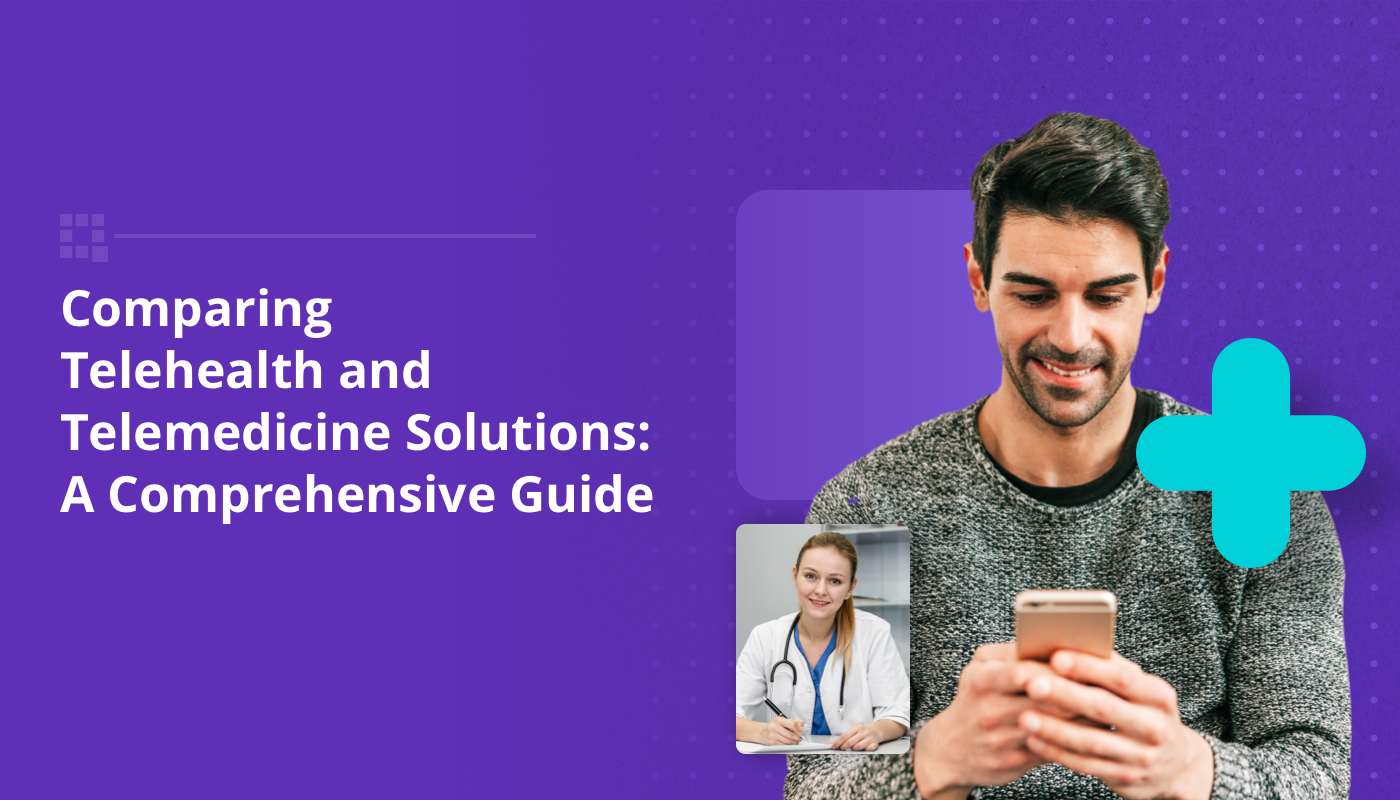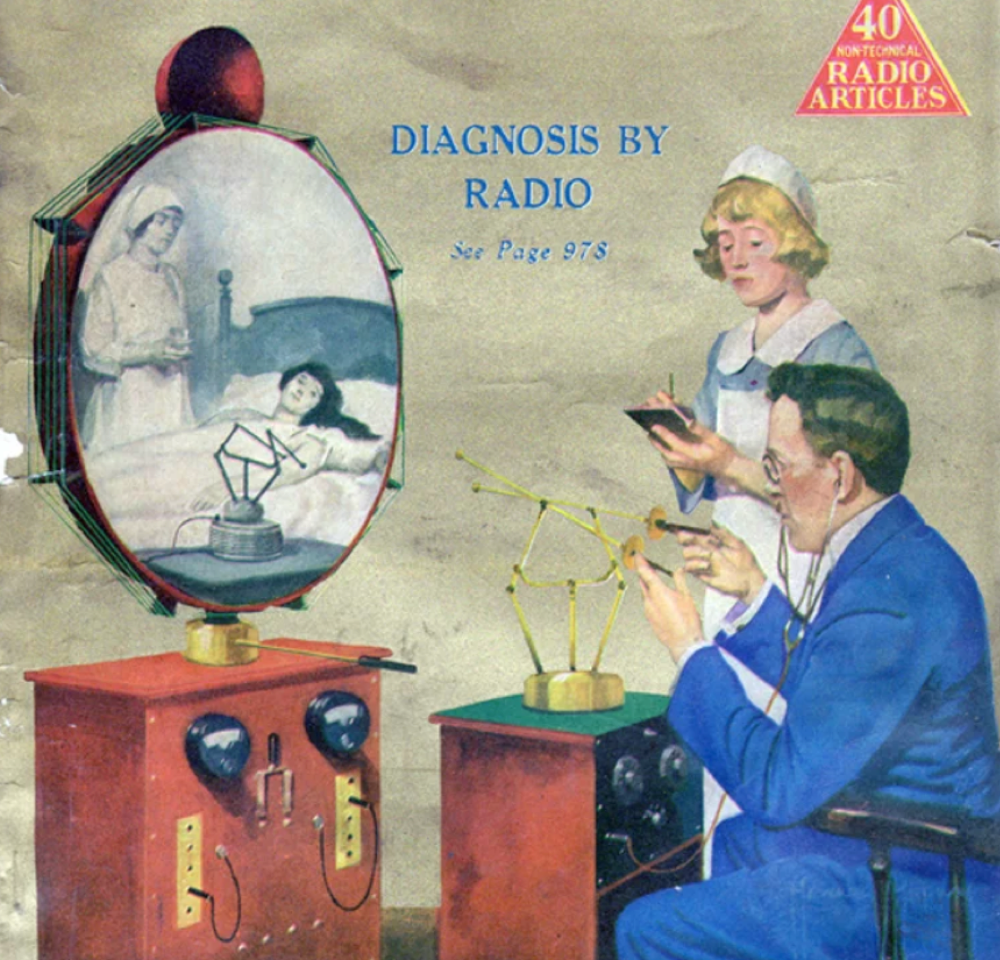
Summary: This article provides an exploration of telehealth and telemedicine solutions, aiming to clarify the differences between these two approaches. It offers a comprehensive analysis of their features, functionalities, applications, benefits, and challenges.
Table of Contents
Introduction
It might surprise you to know that “telemedicine” and “telehealth” have a long history. As early as the 1870s, Lancet medical journal discussed how doctors could administer healthcare services over the telephone. During the 1920s, some pioneering doctors experimented with using radio for remote medical consultations. Then in 1925, an edition of Science and Invention prophesied that doctors would one day treat patients via a video-conferencing device.

Fast forward to today, what seemed futuristic and fantastical back then has since become commonplace. The widespread use of telehealth and telemedicine is revolutionizing healthcare delivery. Statistics demonstrate the widespread adoption of this technology, with 78.6% of US hospitals. having now installed a telemedicine solution. The global telehealth market grew to an estimated USD 101.2 billion in 2023 and is expected to continue on a steep growth trajectory. Analysts predict a compound annual growth rate (CAGR) of 24.3% between 2024 and 2030.
From small startups to global healthcare organizations, this technology offers an array of digital solutions to facilitate patient care, patient-doctor communication, administrative support and healthcare education, offering convenient and effective ways to connect patients and providers remotely.
Although the terms “telemedicine” and “telehealth” are used interchangeably, they are in fact distinct. But what is the difference? This comprehensive guide explores the functionalities of both telehealth and telemedicine, highlighting distinct uses, benefits, and limitations.
Defining Telehealth and Telemedicine
Telehealth and telemedicine encompass distinct concepts within remote healthcare delivery. Let’s look more closely at the distinction.
What is Telehealth?
Telehealth encompasses a broader scope of remote healthcare services that extend beyond direct clinical care, including patient education, preventive care, and administrative tasks. Telehealth services encompasses various forms of communication technologies, including video conferencing, mobile health apps, remote monitoring devices, and digital communication platforms. Telehealth aims to overcome geographical barriers, improve access to healthcare services, and facilitate communication between patients and healthcare providers.
What is Telemedicine?
Telemedicine, on the other hand, represents a subset of telehealth, focusing specifically on the use of telecommunications technology to deliver clinical services remotely between patients and providers. This includes diagnosis, treatment, and monitoring of patients remotely. It involves the use of telecommunications technology to deliver healthcare services, such as remote consultations, virtual visits, and digital diagnostics. Telemedicine often involves interactions between patients and healthcare professionals, leveraging technology to bridge the gap between physical distances.
Ultimately, the distinction between telehealth and telemedicine lies primarily in their scope and focus. While telehealth encompasses a broader range of healthcare services beyond clinical care, telemedicine specifically deals with the diagnosis and treatment of medical conditions through remote means. Both telehealth and telemedicine play integral roles in modern healthcare delivery, offering innovative solutions to improve access, efficiency, and quality of care.

Applications of Telehealth and Telemedicine: Expanding the Reach of Healthcare
Today, telehealth and telemedicine have become integral components of modern healthcare systems offering a diverse range of applications that can revolutionize how healthcare is delivered and accessed. Let’s look at some examples of these applications.
Examples of Telehealth Applications:
Remote Patient Monitoring: This empowers chronic disease management by allowing healthcare providers to remotely track vital signs (blood pressure, heart rate) and other health data (blood sugar levels, weight) through wearable devices or patient-reported information submitted through mobile apps. This enables early detection of potential problems and timely interventions.
Online Educational Resources: Telehealth platforms can provide patients with on-demand access to a library of educational materials and programs on various health topics. This could include disease prevention tips, medication management guides, and healthy lifestyle resources, empowering patients to take a more active role in their health.
Patient Portals: These secure online platforms are a cornerstone of telehealth, allowing patients to manage their healthcare needs conveniently. From the comfort of their home, patients can schedule appointments, refill prescriptions, communicate with their providers through messages, and access medical records, all from a user-friendly online interface.
Learn more about, Key Considerations When Choosing a HIPAA Compliant Telehealth Platform
Examples of Telemedicine Applications:
Virtual Consultations: This is a core application of telemedicine, enabling patients to connect with healthcare providers via video conferencing for a variety of purposes. Virtual consultations can be used for initial assessments, follow-up appointments, medication reviews, and even mental health therapy sessions, providing greater flexibility and convenience for both patients and providers.
Remote Diagnosis and Treatment: Telemedicine can be a valuable tool for diagnosis and treatment in specific situations. Based on virtual consultations, medical history review, and potentially remote diagnostic tools (e.g., transmitting images), providers may be able to diagnose certain conditions and recommend appropriate treatment plans. This can be particularly beneficial in rural areas or for patients with limited mobility. Here are some distinct use cases for remote diagnosis and treatment.
- Telestroke – This enables rapid assessment and treatment of stroke patients in remote or underserved areas. Neurologists can remotely evaluate patients via video conferencing and provide time-sensitive interventions, such as administering clot-busting medications.
- Telecardiology – This extends cardiology services to remote locations, allowing patients to undergo remote cardiac assessments, receive consultations with cardiologists, and access specialized cardiac care.
- Teleradiology – This allows radiologists to interpret medical images remotely, such as X-rays, CT scans, and MRIs. Teleradiology allows for timely interpretation of imaging studies and facilitates collaboration between radiologists and referring physicians.
Specialist Consultations: Telemedicine bridges geographical barriers by connecting patients in underserved areas with specialists located elsewhere. This can be crucial for accessing critical care for complex medical conditions, reducing travel burdens and wait times for patients. For instance, a dermatologist in a major city can consult with a patient in a remote area to diagnose and recommend treatment for a skin condition.
Benefits & Limitations of Virtual Care
Telehealth and telemedicine offer numerous benefits for both patients and healthcare providers. However, it’s also important to acknowledge the challenges associated with both approaches.
Benefits of Telehealth
Given its broader scope, telehealth boasts a wealth of unique benefits.
Improved Accessibility: Telehealth eliminates geographical barriers to care. It’s particularly beneficial for people in remote areas, those with limited mobility, or those facing transportation challenges.
Remote Monitoring for Chronic Conditions: While telemedicine can also be used for chronic disease management, telehealth offers a wider range of tools. This includes wearable devices for monitoring vital signs, blood sugar levels, or other health data. Telehealth platforms can also be used for medication reminders, progress tracking, and communication with health coaches or nurses. This comprehensive approach supports ongoing management and potential early detection of complications.
Preventative and Wellness Focus: Telehealth excels in promoting preventative care and overall wellness. Reminders for checkups, medication adherence support, and educational resources on healthy habits, disease prevention, and self-management techniques delivered virtually can empower patients to take a more proactive role in maintaining their health.
Learn more about, The Impact of Telehealth on Emergency Healthcare
Mental Health Support: Telehealth offers a convenient and accessible platform for mental health consultations, therapy sessions, and support groups. This can be particularly beneficial for individuals who face challenges with transportation, stigma, or limited access to mental health professionals in their area.
Improved Patient Engagement: Telehealth can foster a more patient-centered approach to healthcare. Interactive platforms can provide patients with educational resources, allow them to track their health data, and facilitate communication with healthcare providers through secure messaging or chat functions. This increased engagement empowers patients and promotes better self-management of their health.
Administrative Convenience: Telehealth can streamline administrative tasks in healthcare. By integrating AI with telehealth platforms, for example, appointment scheduling, prescription refills, insurance verification, and information gathering can be completed with an AI virtual assistant and the patient, reducing the administrative burden on healthcare staff, improving overall efficiency.
Benefits of Telemedicine:
Telemedicine has some unique advantages due to its specific focus on clinical services:
Specialist Access: Telemedicine excels at connecting patients with specialists who might not be readily available in their location. This is especially valuable for managing complex conditions or rare diseases. A virtual consultation with a specialist can expedite diagnosis, treatment planning, and overall management of the condition.
Remote Procedures: In some cases, telemedicine makes it possible for certain non-invasive medical procedures to be carried out remotely. For example, a neurologist might use telemedicine to guide a technician performing an EEG (electroencephalogram) in a remote location. This can improve access to specialized procedures for patients in underserved areas.
Real-time Collaboration: Telemedicine facilitates real-time collaboration between healthcare providers during consultations. Specialists can virtually join consultations, from any location, with primary care physicians, allowing for shared decision-making and a more comprehensive approach to patient care.
Enhanced Diagnostics: Telemedicine can be used for real-time transmission of medical data like images (X-rays, MRIs) or even live video feeds during remote examinations. Telespecialists can use telemedicine to offer remote EEG interpretation services. This can expedite diagnosis by allowing specialists to review crucial information immediately and provide feedback.
Learn more about, Significance of HIPAA compliance in telemedicine software
Shared Benefits
Given the considerable overlap between telehealth and telemedicine, they also share several benefits.
Convenience: Both telehealth and telemedicine offer significant convenience for both patients and providers. Patients can access care from the comfort of their homes, reducing travel time and waiting room hassles. Providers can manage schedules more efficiently and expand their reach to more patients.
Cost-Effectiveness: Telehealth and telemedicine can potentially reduce healthcare costs by minimizing travel expenses for patients and streamlining administrative processes. They can also lead to earlier interventions and better management of chronic conditions, reducing the need for more expensive treatments.
Improved Patient Satisfaction: Studies indicate that patients often report high satisfaction with telehealth and telemedicine experiences. The convenience, reduced wait times, and potentially more personalized interaction can contribute to a positive perception of care.
Limitations of Telehealth
As well as the numerous benefits of telehealth, it is important to remain mindfall of some of its limitations, which highlight the importance of using telehealth appropriately and in conjunction with in-person care when necessary.
Limited Suitability for Acute Conditions: Telehealth services might not be well-suited for emergencies or situations that require immediate intervention. Diagnosing and treating acute conditions often rely on a thorough physical examination and access to specific equipment, which telehealth cannot always provide.
Over-reliance on Self-reported Data: Telehealth heavily depends on patients accurately reporting symptoms and health data. This can be unreliable for individuals with limited awareness of their bodies, cognitive impairments, or a tendency to minimize or exaggerate symptoms.
Potential for Misdiagnosis in Mental Health: Telehealth consultations for mental health can be beneficial, but limitations in remotely assessing nuances of mood and behavior can increase the risk of misdiagnosis. In-person interaction often provides valuable clues for accurate mental health assessments.
Potential for Social Isolation for High-Risk Groups: Telehealth can be isolating for individuals who depend on healthcare providers for socialization and emotional support, particularly elderly adults or individuals with limited social connections.
Limitations of Telemedicine
There are also challenges unique to telemedicine because they specifically impact the delivery of clinical services remotely.
Limited Physical Examination Capabilities: Telemedicine consultations inherently have limitations in performing thorough physical examinations. While some aspects can be assessed virtually (e.g., blood pressure readings, visual examinations using special cameras), crucial elements like palpating for abnormalities or assessing reflexes are often not possible remotely.
Potential for Misdiagnosis: The limitations of a remote physical exam, coupled with dependence on patient-reported symptoms, can increase the risk of misdiagnosis in telemedicine consultations. This highlights the importance of clear communication, detailed symptom descriptions, and potentially using remote diagnostic tools when possible.
By acknowledging these benefits and limitations, healthcare providers and policymakers can work towards optimizing the use of telehealth and telemedicine. The key lies in finding the right balance between leveraging technology to improve healthcare delivery and ensuring inclusivity and quality care for all patients.
The Future of Virtual Healthcare
Just as commentators back in 1925 prophesied about futuristic teleconsultation technology, it is exciting to look forward again and anticipate some likely innovations in virtual healthcare in the near future. Here’s a few predictions:
Integration with Wearable Technology: Wearable devices like smartwatches and fitness trackers are already generating valuable health data. In the future, these devices will seamlessly integrate with telehealth platforms, providing a continuous stream of real-time health information for providers to monitor and analyze. This can further personalize care plans and improve preventive measures.
The Rise of Artificial Intelligence (AI): AI has the potential to revolutionize virtual healthcare. AI-powered chatbots can offer patients 24/7 access to basic health information and answer routine questions. AI algorithms can analyze patient data to identify potential health risks and recommend appropriate interventions, further empowering preventive care. We will likely see AI Assistants playing a more prominent role in triage and diagnosis.
Enhanced Virtual Reality (VR) Applications: VR technology can be used to create immersive simulations for training healthcare professionals in virtual environments. Additionally, VR can potentially be used for therapeutic purposes, such as exposure therapy for phobias or anxiety disorders.
Streamlined Integration with Existing Healthcare Systems: Telemedicine and telehealth platforms will need to seamlessly integrate with existing electronic health records (EHR) systems. This will ensure a holistic view of a patient’s medical history, allowing for more informed decisions and improved continuity of care across different virtual and in-person healthcare settings.
These advancements, coupled with ongoing research and development, promise to make virtual healthcare even more sophisticated, accessible, and personalized in the years to come.
Conclusion
Telehealth and telemedicine are rapidly transforming healthcare, offering a plethora of benefits for patients, providers, and the healthcare system as a whole. While challenges exist, continuous advancements in technology hold immense promise for the future of virtual care.
For those seeking a HIPAA-compliant provider of telehealth solutions, QuickBlox offers a robust platform with features like secure video conferencing, real-time data sharing, and customizable applications and AI Assistants. With their commitment to security and scalability, QuickBlox can empower healthcare providers to deliver exceptional virtual care.
Talk to a sales expert
Learn more about our products and get your questions answered.
Contact sales










